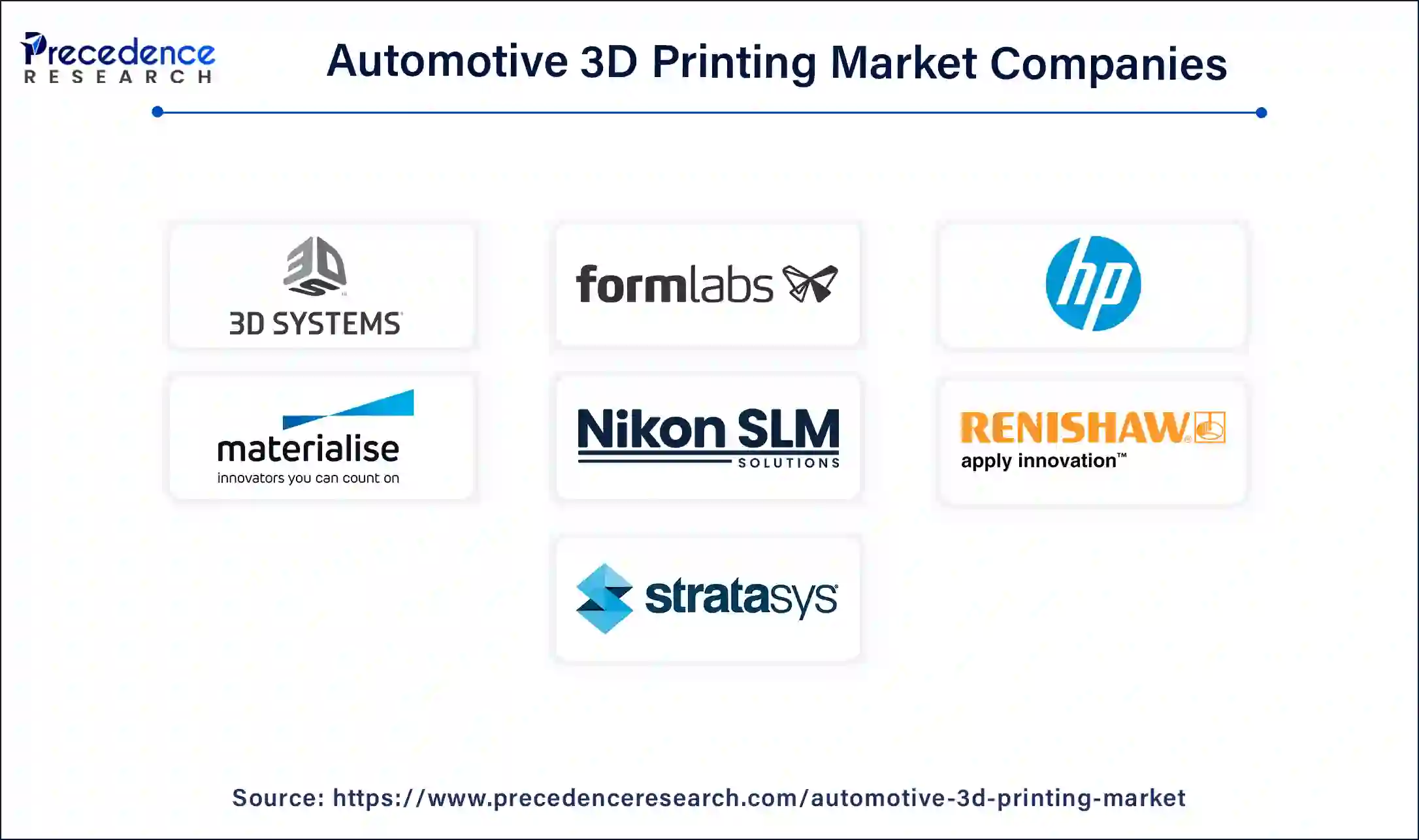Automotive 3D Printing Top Companies-Recent Developments, Business Strategy, Deal Strategy, Patent Strategy, Benchmarking and Management Outlook
Date : November 2024
Automotive 3D Printing Market Size Analysis and Top Companies
The global automotive 3D printing market size is estimated to hit around USD 20.90 billion by 2033 increasing from USD 2.74 billion in 2023, with a double-digit CAGR of 22.53%. The top companies in the automotive 3D printing market are 3D Systems, Formlabs, HP, Materialise, Nikon SLM, Renishaw, Stratasys, and Others.
Market Report Coverage
| Report Attributes | Details |
| Market Size by 2033 | USD 20.90 Billion |
| Market Size in 2023 | USD 2.74 Billion |
| Market Growth Rate from 2023 to 2033 | CAGR of 22.53% |
| Largest Market | North America |
| Base Year | 2023 |
| Forecast Period | 2023 to 2033 |
| Segments Covered | Application, Technology, Material, Offering, Component, Vehicle Type, and Regions |
| Regions Covered | North America, Europe, Asia-Pacific, Latin America and Middle East, and Africa |
Automotive 3D Printing Key Players

- 3D Systems
- Formlabs
- HP
- Materialise
- Nikon SLM
- Renishaw
- Stratasys
Latest Announcements by Industry Leaders
- May 23, 2024 - BMW AG
- Position: Jens Ertel, Head of BMW Additive Manufacturing
- Announcement: BMW Group is enhancing its use of 3D-printed, customized robot grippers. "The growing integration of additive manufacturing within the BMW Group production system offers numerous advantages. We can swiftly, cost-effectively, and flexibly create our own production tools and handling robots that can be tailored to specific needs at any time. This capability allows us to optimize their weight, resulting in faster operations on the production line, shorter cycle times, and lower costs. Additionally, in the medium term, we can deploy smaller robots, which further helps reduce CO2 emissions and operational expenses," explains Jens Ertel.
Recent Developments
- In October 2024, Subaru Corporation is integrating HP's Jet Fusion 3D printing technology into the production of parts for its SUBARU LEVORG concept car. This collaboration highlights how 3D printing is being used for automotive innovation, enhancing design flexibility and reducing production costs.
- In October 2024, British automaker McLaren unveiled its new W1 hybrid hypercar, featuring advanced suspension components made using titanium 3D printing. This technology enables McLaren to reduce the weight and improve the performance of key vehicle parts, emphasizing the growing use of 3D printing in high-performance vehicles.
- In August 2024, Ford partnered with Formlabs to enhance its prototyping capabilities, incorporating 3D printing technology into the development of automotive parts. The collaboration aims to streamline the design process, expedite the testing of new components, and showcase how automotive companies are increasingly turning to 3D printing to innovate vehicle design and manufacturing.
We have prepared a service to support you. please feel free to contact us at sales@precedenceresearch.com | +1 804 441 9344
Keypoints
- Company Overview
- Locations & Subsidiaries/Geographic reach
- Key Executives
- Company Financials
- Patents registered
- SWOT Analysis
- Corporate Strategy
- Applications Catered
- Strategic collaborations
- Recent Developments
- Competitive Benchmarking